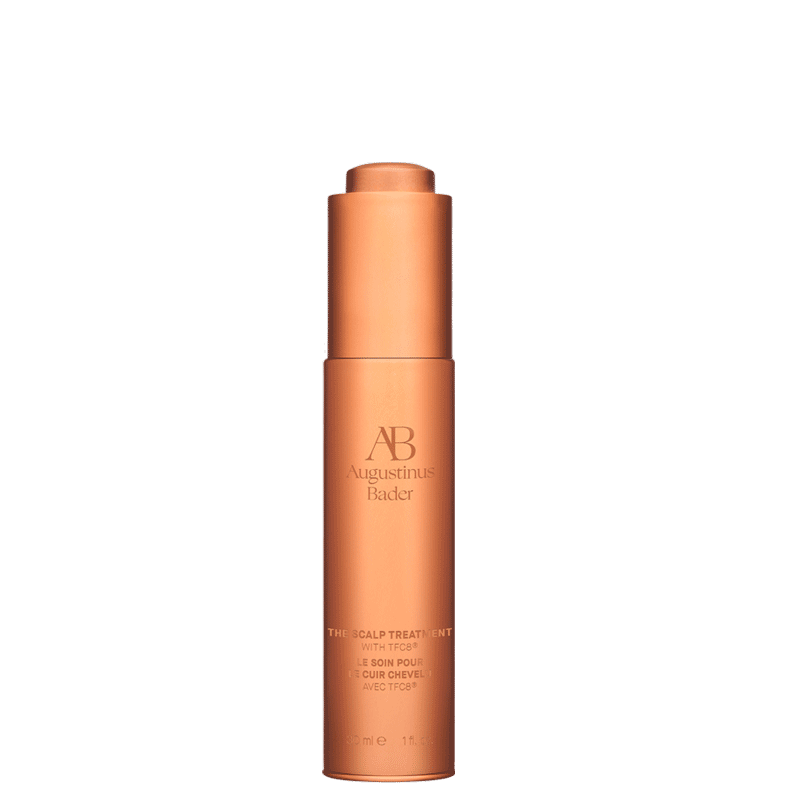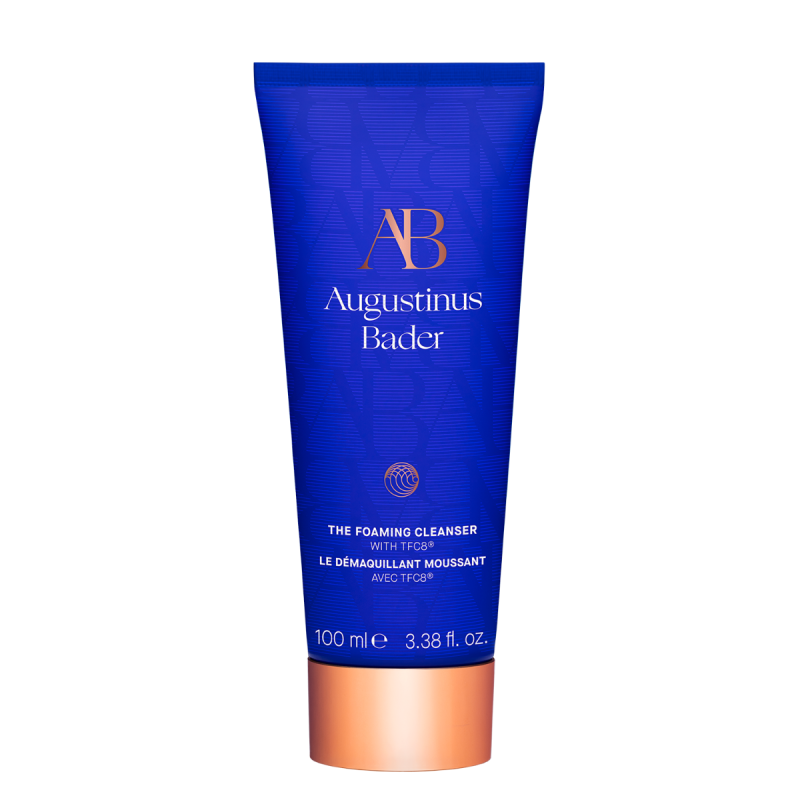Most people experience pimples, whiteheads, and blackheads on their faces, neck, and back. However, did you know acne can appear anywhere on the body where a hair follicle exists? Hair follicles clogged with excess sebum, dirt, bacteria, or grime can cause a breakout. Some people deal with painful and inflamed pimples, while others may hardly notice them. It's also true that some are more prone to pimples on their hairline and scalp than others.
Acne can cause unwanted itchiness, irritation, and inflammation if left untreated. This type of breakout can be challenging to treat and prevent -- we're here to walk you through the causes and nature of hairline acne and how you can revamp your daily routine to combat these breakouts.
What is Hairline Acne?
Hairline acne appears on the hairline and the scalp and is often itchy, inflamed, and hard to treat. Since most of the acne lives where your hair is growing, it may only be visible once you brush your hair, run your fingers through it, or inspect the hairline. Many individuals also experience pimples on the back of the neck near the hairline.
Clogged pores cause acne on the hairline and the scalp. Whether you're not washing your hair regularly or not getting your hairline when you wash your face with a daily cleanser - these small habits can lead to unwanted pimples over time.
Different Types of Hairline Acne
There are two main types of pimples on the hairline to consider. Both irritate and commonly occur if you aren't cleansing your face, taking care of your scalp, or washing along the hairline. Here's a breakdown:
Fungal Acne
A buildup of yeast causes fungal acne. When this happens, the fungus turns into dandruff. Dandruff is white or yellowish flakes that gather on the scalp. If you have dandruff, your scalp may be itchier than usual, and you may notice white flakes when you go to itch your scalp or along the hairline.
When fungal acne appears, it also leads to small bumps. These small bumps are tiny clogged pores that commonly appear on the scalp, forehead, scalp, behind the ears, or the nape of the neck. Fungal acne isn't typically inflammatory; some may not notice it until they itch their scalp and notice dandruff.
Inflammatory Papules
This is an inflammatory type of acne that appears red or pink. It's typically tender to the touch and can be painful. Inflammatory papules appear on the hairline or the forehead and face. The best way to treat inflammatory papules is to wash your face regularly and to use soothing ingredients like salicylic acid.
While these are the two most common types of acne found on the headline or scalp, you may also see blackheads, whiteheads, and cysts.
What Causes Hairline Acne?


Various factors cause the occurrence of acne on your neck, hairline, or face. While certain causes may be beyond your control, many are related to lifestyle choices, daily habits, and the products you incorporate into your routine. By being mindful of these aspects, you can take proactive steps toward managing and minimizing acne-related concerns.
Oily Scalp
If you struggle with an oily scalp, it means your scalp produces an excess amount of sebum. This sebum can gather in your pores and cause breakouts. If you have an oily scalp, here are a few things you can do to combat the oil:
● Only use conditioner on your ends
● Switch to a dry shampoo during the week
● Don't overwash your hair
Look for products specifically formulated for oily hair types
Over and Under Washing Your Hair
Everyone's hair is different. Some people feel the need to wash their hair every day to maintain a level of cleanliness and avoid a buildup of dandruff. However, others wash just once or twice a week to maintain the integrity of their hair. Overwashing your hair can strip the natural oils from your scalp, cause excess sebum production, and scalp and hairline acne.
Under washing your hair can lead to a scalp buildup of dead skin cells, dirt, and grime, which weighs down your hair and impacts its natural look and luster. It can also lead to a buildup of fungal acne on the hairline and the scalp.
To find your perfect hair-washing routine, consider your hair type and density. For example, if you have curly hair, consider washing your hair once a week. On the other hand, it's advisable to wash straight hair every two or three days to avoid excess oil on the scalp.
Exercising Regularly
While exercise is essential to maintaining optimal health, excess sweat can lead to unwanted acne, and this sweat can lead to unwanted breakouts on the face, hairline, and scalp. Every time you go to the gym, you'll want to ensure you wash your face or shower so the sweat doesn't accumulate. Also, consider throwing a clean towel into your gym bag to wipe your face between sets.
Not Using the Right Hair Care Products
Using the wrong hair care products may lead to an oily scalp or inflammation. The right hair care products neutralize the oils on your scalp and help you combat clogged pores and acne breakouts. If you're worried your hair care products may contribute to the problem, you'll want to look at the ingredient list. Ingredients like coconut oil, silicone, cocoa, and mineral oil can clog pores and trigger acne.
The Wrong Ingredients
Ingredients like coconut oil can sometimes be too thick for your scalp, worsening your fungal acne and leading to more unwanted breakouts. Choose gentle, non-comedogenic ingredients when looking for products to incorporate into your skin and hair care routine. This will ensure you won't clog your pores or cause excess irritation on the skin's surface.
Product Build Up
Product buildup occurs when excessive hair products accumulate on the scalp, leading to various issues. Overuse of products is a common cause, resulting in uncomfortable symptoms such as itchiness, dryness, and scalp acne.
One noticeable effect of product buildup is the lackluster appearance of hair, with diminished volume. The affected individual may also experience heightened itchiness on the scalp and a sensation of dryness despite greasiness.
If left unaddressed, product buildup can exacerbate irritation and contribute to persistent acne on the scalp. To alleviate these concerns, it is advisable to explore scalp treatments specifically designed to cleanse the scalp or consider switching to a purifying shampoo. By adopting these measures, you can effectively combat the effects of product buildup and restore the health and balance of your scalp and hair.
Not Cleaning Your Face Regularly
Conversely, excessive face washing can lead to skin dryness, creating an imbalance. When the skin becomes dry, it can prompt an overproduction of sebum, contributing to the emergence of acne on both the skin's surface and the hairline. It is important to balance and avoid over-washing to maintain the skin's natural moisture levels and minimize the risk of acne breakouts.
The Foaming Cleanser, our purifying daily cleanser, helps balance, refresh, and cleanse the skin of impurities. It contains a potent blend of powerful super-hydrators and potent botanicals, so you don't need to worry about long-lasting makeup, sweat, or grime building up along your hairline.
Hairline Acne Treatment and Prevention


If you’re struggling with hairline acne, know you aren’t alone. It’s more common than you might think. With a few changes to your hair care routine and lifestyle, you can prevent more acne on the hairline from forming and reduce your risk in the future.
Here’s what you can do:
Switch to Oil Free
When dealing with an already oily scalp, it is crucial to avoid exacerbating the situation. Therefore, when selecting new hair care products to integrate into your routine, it is advisable to steer clear of heavier oils such as coconut or olive oil. Instead, opt for a lightweight alternative like argan oil to achieve more favorable outcomes and prevent further oiliness. This switch allows you to effectively manage your scalp's oil production and maintain a healthier balance.
Apply a Scalp Treatment
If you're dealing with acne on the scalp, you'll want to use a scalp treatment to help cleanse the scalp and balance the pH levels. The Scalp Treatment is our innovative serum formulated to help rejuvenate the scalp, which contains soothing ingredients to help your scalp return to its natural pH levels. During our 12-week clinical trials, The Scalp Treatment reduced hair follicle clogging by 96%.
Consider speaking with a medical professional if you have mild or serious acne breakouts on the scalp, as this sometimes indicates a more significant problem or imbalance. A dermatologist may recommend switching to a medicated scalp treatment to help clear up any unwanted scalp breakouts.
Switch out Your Pillowcases and Bed Sheets
Over time, bacteria and excess oil can accumulate on pillowcases and bed sheets, and failing to clean them regularly can contribute to the occurrence of breakouts. Though it may appear to be a demanding task, it is essential to prioritize washing your pillow covers at least once a week. A convenient approach is to include them in your regular laundry loads whenever you wash your clothes. Additionally, it is vital to maintain a routine of washing your bedsheets and comforters regularly. Adhering to these practices can mitigate the accumulation of bacteria and oil, promoting a cleaner and healthier sleeping environment.
Wash Your Face Regularly
Establishing a regular face-washing routine is instrumental in minimizing the risk of acne on the hairline while preventing breakouts on the face. When seeking a suitable cleanser to incorporate into your regimen, it is advisable to steer clear of products containing sulfates or harsh alcohols. Instead, prioritize cleansers formulated with beneficial ingredients such as niacinamide, aloe vera leaf juice, and salicylic acid. These ingredients can contribute to maintaining a healthier complexion and reducing the likelihood of acne breakouts, particularly along the hairline.
Combat Hairline and Scalp Acne With Augustinus Bader
Managing acne on the hairline or scalp can be a challenging endeavor. If you continuously grapple with breakouts and inflammation, it may be time to overhaul your hair care routine with superior essentials. At Augustinus Bader, our range of meticulously crafted hair care products uses clean ingredients supported by over 30+ years of research and clinical trials.
Take the opportunity to explore our collection of exceptional hair care essentials today and discover the potential to transform your hair care routine for the better.



